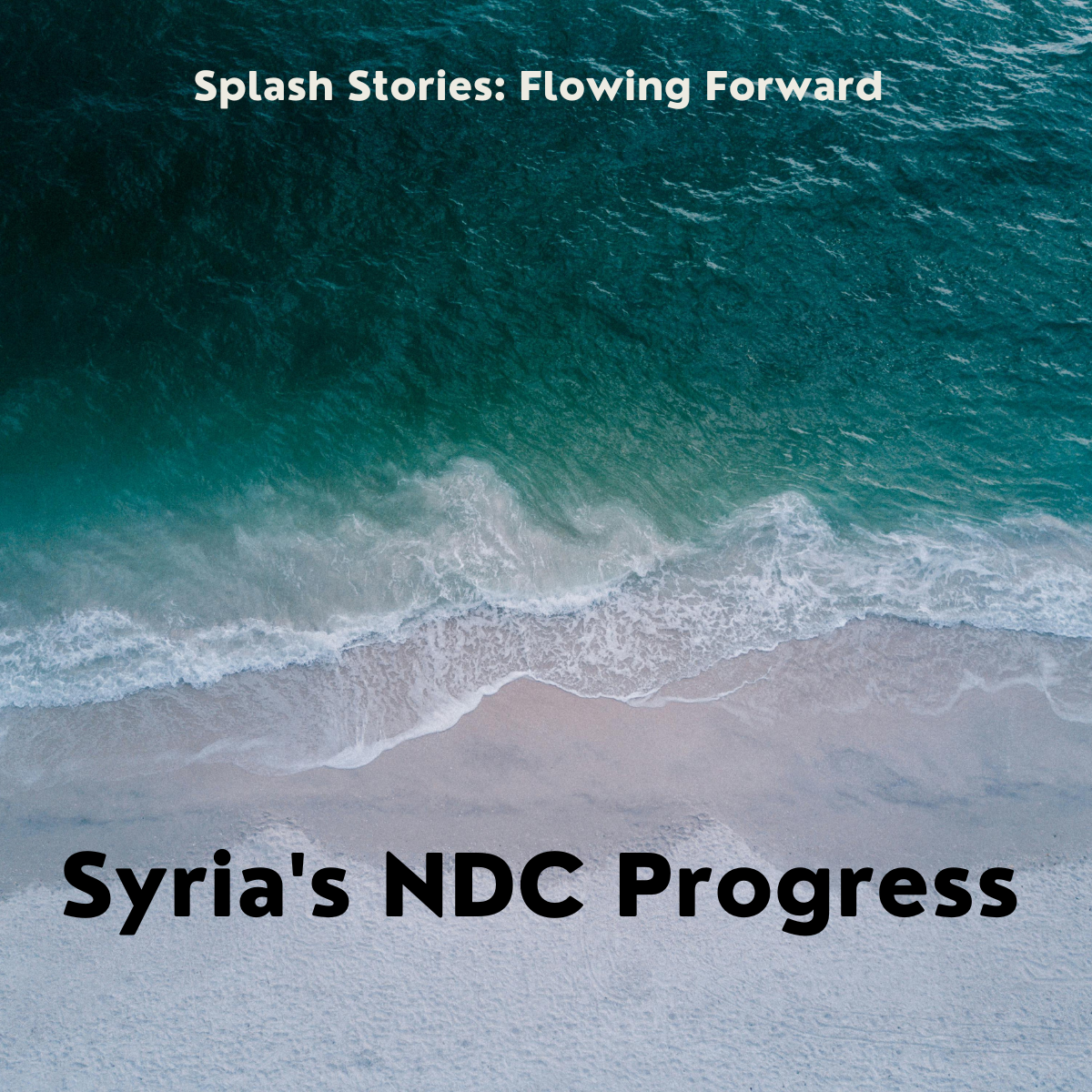Syria's NDC Progress in the Spotlight at COP28

While the Syrian Arab Republic isn't among the primary contributors to climate change and greenhouse gas emissions on a global scale, it faces significant impacts from these phenomena. The country experiences a range of severe consequences due to global warming and climate change. These effects include irregular climatic patterns such as shifts in precipitation, intense rainstorms, depletion of river water, declining levels of both natural and man-made lakes, recurrent droughts with escalating risks, soaring temperatures, heatwaves, forest fires, sand and dust storms, as well as a concerning increase in both the duration and frequency of these storms. These adversities contribute significantly to the process of desertification in the region.
What is an NDC?
In its essence, an NDC, short for Nationally Determined Contribution, represents a comprehensive strategy designed to curb greenhouse gas emissions and fortify resilience against climate change impacts. Under the Paris Agreement, it's obligatory for each participating nation to formulate an NDC and update it every five years.
Nationally Determined Contributions (NDCs) essentially outline a country's goals to reduce greenhouse gas emissions, combat climate change effects through adaptive measures, and detail the roadmap to achieve these objectives. They also elaborate on the mechanisms for monitoring progress and verifying adherence to the outlined path. Integrating a financing strategy within NDCs is considered crucial, given the pivotal role of climate finance in effectively executing these plans.
The Syrian Arab Republic took a significant stride towards environmental stewardship by ratifying the Paris Agreement on November 13, 2017. This monumental decision led to the establishment of a dedicated national committee within the Ministry of Local Administration and Environment. Comprising representatives from various ministries and national bodies, this committee ramped up its efforts to craft Syria's first NDC.
NDC Status: Timeline of UNFCCC Document Submissions
- 1st national communication (2010): https://unfccc.int/resource/docs/natc/syrnc1.pdf
- GHG inventory of the Syrian's Initial National Communication to UNFCCC: https://unfccc.int/resource/docs/natc/syrnc1add1.pdf
- 1st NDC (2018) in Arabic: https://unfccc.int/NDCREG
- 1st NDC (2018) in English: https://unfccc.int/NDCREG
- No revised NDC from previous submission is available.
The anticipation for the NDC report is centred around notable advancements in how the 2030 and 2050 national and sectoral goals are established, aiming for increased ambition in mitigation efforts, and enhancing readiness and adaptation to climate change. Regrettably, the Syrian NDC lacks specific targets for each focal sector and fails to provide additional information that could enhance clarity, transparency, and understanding.
Despite the challenging circumstances within Syria, several initiatives have been undertaken across various sectors to mitigate emissions. These interventions span multiple sectors, including energy, forestry, agriculture, transportation, industry, solid waste, and housing. The NDC also incorporates adaptation strategies. These measures encompass efficient water resource management, biodiversity conservation, combatting land degradation and desertification, the formulation of Integrated Coastal Zone Management Plans, and the establishment of early warning systems. These efforts collectively aim to address both emission reduction and adaptation to climate change impacts within the country.
Key highlights from the NDC with focus on the water sector
Water scarcity adaptation demands a focused approach, prioritizing the reduction of vulnerability and the sustainability of agricultural production while safeguarding the environment. Achieving these objectives necessitates substantial alterations in how water resources are managed, policies are structured, and associated infrastructure is developed. Within the agricultural sector, strategies for adapting to water scarcity encompass a range of crucial actions:
- Preservation of water resources: This involves proactive measures to safeguard both surface and groundwater from pollution, ensuring the continued availability of clean water sources vital for various uses.
- Minimization of water losses: By identifying and rectifying irrigation channels leakages and improving soil moisture through organic matter enrichment, this approach aims to reduce wastage and optimize water utilization in agricultural settings.
- Enhancement of irrigation water efficiency: Through the support of water harvesting methods and the implementation of highly efficient irrigation techniques, this step ensures that water is used effectively, particularly crucial during drought periods, meeting the specific needs of plants without excess.
- Promotion of non-traditional water resource utilization: This strategy involves utilizing treated sewage, agricultural drainage, and constructing wastewater treatment plants to serve larger river systems and smaller communities. This process generates irrigation water, expanding the available water sources.
- Upgrading agricultural practices: Adjusting planting schedules, improving plant nutrition, cultivating crops with lower water demands, introducing drought-resistant varieties, diversifying crop types, and integrating animal husbandry contribute to more sustainable and resilient farming methods. Empowering both male and female farmers through agricultural and rural extension services, alongside reinforcing market connections, plays a vital role in this adaptation process, fostering a more robust agricultural sector.
Syria's Water Sector Adaptation: NDC's Integrated Approach for a Sustainable Future
The adaptation plans for the water sector should encapsulate a pivotal aim: the adoption of an integrated strategy to confront escalating future water demands while mitigating potential deficits within the country's water resources. This objective holds critical importance, emphasizing the necessity of flexibly adapting and evolving water usage patterns in response to the challenges posed by climate change. The fundamental goal is to ensure the sustained viability and longevity of these precious resources, pivotal to Syria's socio-economic landscape and ecological equilibrium.
The emphasis on an integrated approach underscores the recognition that addressing water-related challenges demands a holistic strategy, one that spans policy implementation, technological advancements, and community engagement. By intertwining flexibility, innovation, and sustainability into the fabric of water resource management, Syria will navigate the looming water crisis while adapting to the evolving impacts of climate change.
Syria's engagement in the process will showcase its proactive stance on climate concerns and underscores the importance of inclusive, consultative policymaking. This approach not only emphasizes Syria's dedication to addressing climate challenges but also underscores the value of incorporating diverse perspectives in shaping impactful policies.